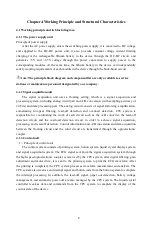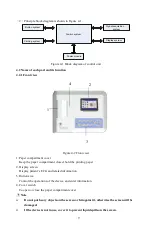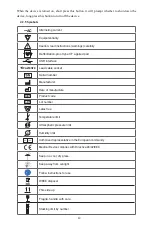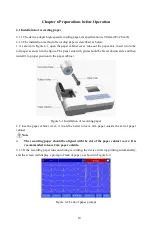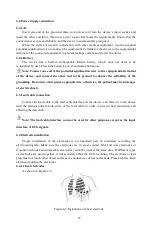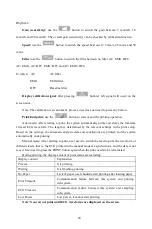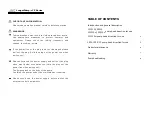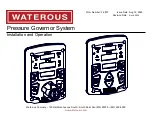
5
The device complies with the safety standards for medical electrical equipment or system
electromagnetic compatibility in IEC60601-1-2. Electromagnetic environments exceeding the
IEC60601-1-2 standard may cause harmful interference to the device or prevent the device from
performing its intended function or degrade its performance. Therefore, if there is a phenomenon
that does not match its function during use, be sure to confirm and eliminate adverse effects
before continuing to use it. Corresponding precautions for this situation are given in this manual.
n
The device or system should not be used near or stacked with other devices. If it must be
used near or stacked with other devices, it should be observed and verified that the device
is working normally under the configuration it is using.
n
The use of ACCESSORIES other than those specified by the MANUFACTURER of the
device or system, may result in increased EMISSIONS or decreased IMMUNITY of the
ME EQUIPMENT or ME SYSTEM.
n
Effect from radiated electromagnetic waves:
The use of a mobile phone may affect the operation of the device. When installing medical
electrical equipment, be sure to remind people around the device to turn off mobile phones and
small radios.
n
Effect from shock and conduction electromagnetic waves:
High frequency noise from other equipment can enter the device through the AC socket.
Please identify the source of noise, if possible, stop using the equipment. If the equipment can
not be deactivated, use noise cancellation equipment or take other measures to reduce the
impact.
n
Effect from static electricity:
Static electricity in a dry environment(indoor) may affect the operation of the device,
especially in winter. Before using the device, humidify the indoor air or discharge the static
electricity from the cable and operator.
n
Effect from thunder and lightning:
If there is thunder and lightning nearby, it may cause a voltage surge in the device. If you
are concerned about danger, disconnect the AC power and use the internal power supply.
2.16 Notes concerning ECG waveform measurement and analysis
2.16.1 The identification of P wave and Q wave is not always reliable with intensive EMG or AC
interference. Neither are the ST segment and T wave with baseline drift.
2.16.2 Winding and unclear end position of S wave and T wave may cause error in measurement.
2.16.3 When R wave is uninspected caused by some leads off or QRS wave low voltage, the
heart rate measurement may deviate greatly from the correct.
2.16.4 In case of QRS low voltage, ECG axis calculation and border-point identify of QRS wave
are not always reliable.
2.16.5 Occasionally, frequent ventricular premature complexes may be identified as dominant
beat.
2.16.6 Merging of versatile arrhythmia may result in unreliable measurement because of the
difficulty in distinguishing P wave in such situation.
2.16.7 The device has an automatic analysis function that automatically analyzes the obtained
ECG waveform without reflecting all the patient’s status. The results of the analysis may














